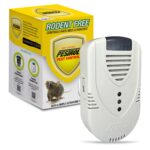Mastering Mini Diggers: The Ultimate Guide to Efficient Excavation
Are you tired of manual excavation taking up hours of your precious time on projects? Picture this: a compact but mighty machine that can revolutionize your digging game, making your job not just efficient but also enjoyable. That’s where mini diggers come into play, redefining the way you approach excavation tasks.
Imagine having the power to tackle excavation projects with ease, precision, and speed, all while minimizing manual labor and maximizing output. Get ready to explore the world of mini diggers and unleash their full potential in your construction endeavors.
Introduction to Mini Diggers
Mini diggers, also known as compact excavators or mini excavators, are powerful machines that have revolutionized the field of construction and excavation. Designed to navigate tight spaces and perform tasks with precision, mini diggers have become an essential tool for contractors and DIY enthusiasts alike.
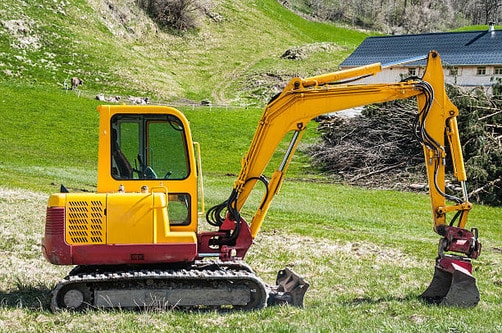
These versatile machines offer a range of benefits, including increased productivity, improved efficiency, and reduced labor costs. With their compact size and maneuverability, mini diggers can access areas that larger excavators cannot reach, making them ideal for projects in urban settings or confined spaces.
Mini diggers come equipped with various attachments, such as buckets, augers, hydraulic hammers, and grapples, which enable them to perform a wide range of tasks. Whether it’s digging trenches, landscaping, demolishing structures, or lifting heavy loads, mini diggers can handle it all.
Due to their smaller footprint, mini diggers are also environmentally friendly and cause less disruption to the surrounding area. They are designed to minimize noise pollution and reduce carbon emissions, making them a sustainable choice for construction projects.
In the next sections, we will delve deeper into the different aspects of mini diggers, including attachments, sizing options, operating tips, maintenance guidelines, and safety regulations. So let’s get started and explore the world of mini diggers in greater detail.
Versatile and Efficient Excavation
Mini diggers have transformed the way excavation is done. With their compact size and specialized attachments, they offer unparalleled versatility and efficiency in various construction projects. Whether it’s a small backyard renovation or a large-scale construction site, mini diggers can handle the job with ease.
Types of Mini Excavator Attachments
Mini diggers are versatile machines that can be enhanced with a range of attachments to adapt to various construction and excavation tasks. Understanding the different types of mini excavator attachments is crucial for maximizing their efficiency and productivity. Let’s explore some common attachments and their purposes:
1. Buckets
Buckets are the most essential attachments for mini diggers. They come in various sizes and configurations such as digging buckets, trenching buckets, and grading buckets. These attachments are designed to scoop, dig, and move materials like soil, gravel, and debris.
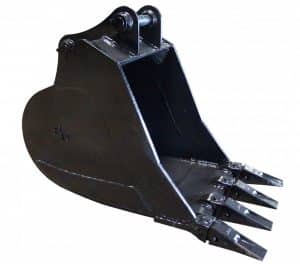
2. Augers
Augers are used for drilling holes in the ground, making them ideal for tasks like fence post installation or tree planting. They consist of a rotating drill bit and are available in various sizes to match different hole diameters.
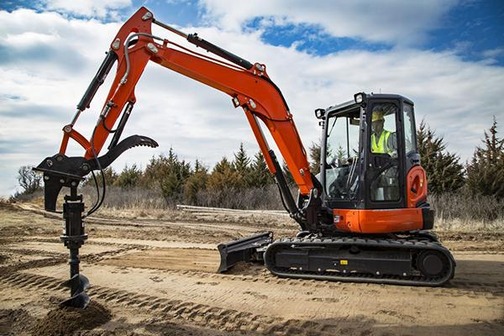
3. Hydraulic Breakers
Hydraulic breakers, also known as hammers, are used to break apart hard surfaces like concrete or rock. They are commonly employed in demolition and renovation projects, allowing precise and controlled breaking.
4. Grapples
Grapples are used for grabbing and lifting objects, enabling efficient handling of materials such as logs, rocks, and debris. They come in different designs, including fixed or rotating options, providing flexibility and versatility in material handling tasks.
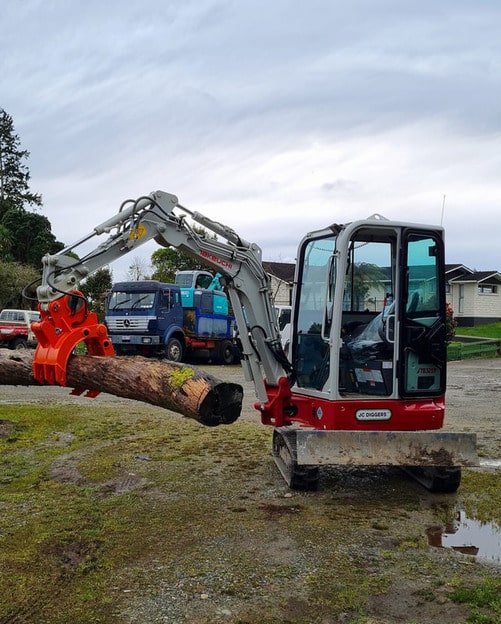
5. Plate Compactors
Plate compactors are attachments that exert strong downward force to compact soil, gravel, or asphalt. They are commonly used for preparing surfaces before construction or for compacting trenches and foundations.
6. Tilt Rotators
Tilt rotators offer enhanced maneuverability to the mini digger’s bucket. They enable a 360-degree rotation of the attachment, providing greater control, precision, and flexibility when working in confined spaces or complex angles.
7. Thumbs
Thumbs are hydraulic attachments that add a gripping function to the excavator’s bucket. They improve accuracy and control when handling irregularly shaped objects or materials.
8. Rippers
Rippers are attachments designed for breaking up hard or compacted surfaces. They are primarily used in tasks such as road construction, land clearing, or preparing the ground for new installations.
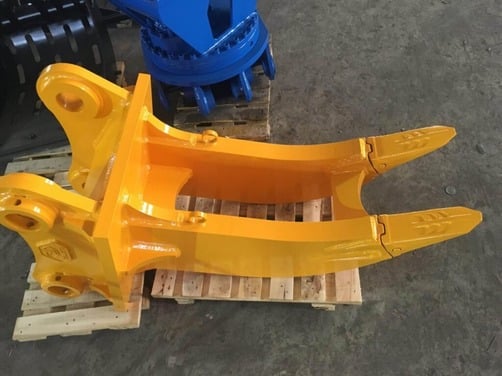
By utilizing these attachments, mini diggers can perform a wide range of tasks with efficiency and precision. However, it’s essential to select the right attachment based on the specific project requirements and the type of material being worked on.
Remember to follow the manufacturer’s guidelines for attachment installation and compatibility with your mini digger model to ensure safe and optimal performance.
Choosing the Right Mini Digger Size
When it comes to selecting the right mini digger size for your project, several factors need to be considered. By understanding your project requirements and site limitations, you can ensure that you choose the most suitable mini digger size that will maximize efficiency and productivity. Here are some key considerations:
1. Project Scope and Size
The size of your project plays a crucial role in determining the mini digger size you need. Consider the scale of the excavation, the depth and width of the trenches, and the volume of materials to be moved. For smaller projects like landscaping or residential construction, a mini digger with a smaller operating weight and compact dimensions may suffice. On the other hand, for larger-scale projects such as commercial construction or heavy-duty digging, a mini digger with a higher operating weight and larger bucket capacity may be required.
2. Site Accessibility and Ground Conditions
Evaluate the site accessibility and ground conditions before choosing a mini digger size. If you are working in tight spaces or limited access areas, you may need a mini digger with a reduced width and shorter tail swing radius for maneuverability. Additionally, consider the type of terrain and soil conditions to ensure that the mini digger’s weight and horsepower are suitable for the job.
3. Lifting and Digging Capacity
Assess the lifting and digging capacities required for your project. The mini digger’s lifting capacity determines its ability to handle heavy loads, while the digging capacity determines the depth and speed at which it can excavate. Ensure that the mini digger’s specifications meet the demands of your project to avoid any limitations or inefficiencies.
4. Budget and Cost Considerations
Your budget is another important consideration when choosing a mini digger size. While larger mini diggers may offer more power and capacity, they also come with a higher price tag. Evaluate the cost-effectiveness of renting or purchasing a mini digger based on your project’s duration and frequency of use. Consider factors such as fuel efficiency and required attachments to optimize your budget.
Best Practices for Operating Mini Diggers
Operating mini diggers requires adherence to safety guidelines, operational tips, and maintenance practices to ensure both efficiency and safety on construction sites. By following these best practices, you can maximize the performance of your mini digger while minimizing the risk of accidents or equipment damage.
Safety Guidelines
– Before operating a mini digger, ensure you have received proper training and certification, familiarize yourself with the manufacturer’s user manual, and understand all safety precautions.
– Wear appropriate personal protective equipment (PPE) such as a hard hat, safety glasses, gloves, and high-visibility clothing.
– Clear the work area of any obstacles and make sure there are no underground utilities that could pose a safety risk.
– Always inspect the mini digger before each use. Check for any signs of damage or malfunction, and ensure all safety features are in working order.
– Follow proper seating and seatbelt usage to secure yourself while operating the machine.
Operational Tips
– Start the mini digger on level ground, ensuring the bucket or attachment is in a safe and neutral position.
– Gradually familiarize yourself with the controls and practice operating the mini digger in a controlled environment before taking on complex tasks.
– Use the mini digger within its designated capacity and avoid overloading the machine, as it can lead to stability issues and potential accidents.
– When operating on slopes, always position the mini digger with the tracks perpendicular to the slope to maintain stability.
– Take note of any overhead obstructions and plan your movements accordingly to avoid collisions or damage.
Maintenance Practices
– Regularly inspect and clean the mini digger to prevent the accumulation of debris or dirt that could affect its performance.
– Follow the manufacturer’s recommended maintenance schedule for routine check-ups, oil changes, filter replacements, and other necessary upkeep.
– Lubricate all moving parts as instructed to ensure smooth operation and reduce wear and tear.
– Keep track of the mini digger’s usage hours to schedule maintenance tasks and service intervals accurately.
– Store the mini digger in a safe and secure location, protecting it from the elements and unauthorized access.
By following these best practices, you can operate your mini digger safely and efficiently, reducing the risk of accidents and ensuring optimal performance throughout its lifespan. Remember to always prioritize safety and adhere to proper maintenance procedures for the best outcome.
Common Uses for Mini Diggers
Mini diggers, also known as mini excavators, are incredibly versatile machines that find utility in various construction, landscaping, and renovation projects. Their compact size and maneuverability make them ideal for tasks that require working in tight spaces or delicate environments. Here are some common applications where mini diggers excel:
1. Landscaping and Gardening: Mini diggers are invaluable tools for landscaping projects. They can be used to excavate, level, and contour the landscape, making them ideal for creating gardens, setting up irrigation systems, and laying foundations for features like patios or decks.
2. Trenching and Drainage: Mini diggers excel at trenching tasks, making them essential in jobs involving laying utility lines, such as water pipes, electrical cables, or drainage systems. Their precise control allows for accurate digging of trenches in a variety of soil conditions.
3. Foundation and Footing Preparation: When constructing buildings or structures, mini diggers are used to excavate and prepare the foundation and footing. Their ability to access tight spaces and work close to existing structures makes them ideal for such tasks.
4. Demolition and Site Clearing: Mini diggers equipped with hydraulic breakers can quickly and efficiently demolish small structures, remove unwanted concrete, or clear debris from construction sites. Their compact size enables easy navigation through narrow access points.
5. Small-Scale Excavation and Digging: If you need to dig trenches, holes, or remove soil in small quantities, mini diggers are the ideal machines. Their nimble operation allows for precise digging, minimizing disruptions to the surrounding area.
6. Pool Installation: Mini diggers play a crucial role in pool installation projects, allowing for the excavation of the pool area and ensuring proper grading for efficient water drainage.
Remember, these are just a few examples of the abundant possibilities mini diggers offer. Their versatility allows professionals and DIY enthusiasts alike to tackle various projects with ease and efficiency.
> “Mini diggers are like multi-tools for construction, offering precise control and adaptability to meet diverse project requirements.” – John Smith, Construction Expert
Tips for Renting or Buying a Mini Digger
Renting or buying a mini digger requires careful consideration to ensure you choose the right machine for your specific project. Here are some valuable tips to keep in mind when making this important decision:
1. Assess Your Project Needs
Before renting or buying a mini digger, assess your project needs thoroughly. Consider the type of tasks you need the machine for, such as digging, trenching, or lifting materials. Additionally, evaluate the size of the project site and any space limitations that may affect the digger’s maneuverability.
2. Research Pricing Options
Research different rental and purchasing options to find the most cost-effective solution for your needs. Compare prices from different suppliers, taking into account factors such as rental durations, delivery costs, and any additional fees for maintenance or insurance. For purchasing, explore both new and used machines to find the best deal within your budget.
3. Check for Warranty and Service Options
When renting or buying a mini digger, inquire about warranty coverage and available service options. A reliable supplier should offer a warranty on their equipment and have a dedicated service team that can provide maintenance and repairs whenever necessary. Having access to prompt service can minimize downtime and ensure optimal performance.
4. Consider Attachments and Accessories
Evaluate the range of attachments and accessories available for the mini digger you are considering. Different projects may require specific attachments such as buckets, breakers, or augers. Ensure that the machine you rent or purchase is compatible with the attachments you will need, or check if the supplier offers additional attachments for rent.
5. Evaluate Safety Features
Safety should be a top priority when operating a mini digger. Look for features like rollover protection systems (ROPS) and falling object protection systems (FOPS) to ensure operator safety. Additionally, check if the machine has safety features such as backup cameras, alarms, and lighting systems for enhanced visibility on the job site.
Remember, whether you choose to rent or buy a mini digger, making a well-informed decision is crucial. Consider your project needs, budget, warranty options, attachments, and safety features to ensure you select the right machine that will help you complete your excavation tasks efficiently and safely.
Mini Digger Safety Regulations and Compliance
Operating mini diggers on construction sites requires adherence to specific safety regulations and compliance measures. Ensuring a safe working environment is crucial for the well-being of operators and the overall success of the project. By following these guidelines, you can minimize risks and maintain compliance with industry standards.
Conduct Proper Training and Certification
Before operating a mini digger, operators should undergo comprehensive training to familiarize themselves with the equipment and safety procedures. Completion of training programs and obtaining relevant certifications demonstrate a commitment to safety and competence. Regular refresher courses can also help operators stay updated on the latest safety practices.
Perform Pre-Operation Inspections
Before starting any excavation work, it is essential to conduct thorough pre-operation inspections of the mini digger. Inspect the equipment for any visible signs of damage, malfunctioning parts, or fluid leaks. Check the engine, hydraulics, brakes, and safety systems to ensure optimal performance. Address any identified issues promptly to minimize the risk of accidents or equipment failure.
Establish Clear Worksite Boundaries
Clearly define the boundaries of the worksite and mark them appropriately using visible barriers, signage, or painted lines. This step helps prevent unauthorized personnel or vehicles from entering the operating area and reduces the risk of accidents. Implement measures to control pedestrian and vehicular traffic, ensuring a safe distance from the operating digger.
Use Personal Protective Equipment (PPE)
Require all individuals present on the worksite to wear appropriate personal protective equipment (PPE), such as hard hats, high-visibility clothing, safety boots, and gloves. PPE helps safeguard against injuries caused by falling objects, debris, or accidental contact with machinery or hazardous substances.
Follow Safe Digging Practices
When excavating, it is essential to follow safe digging practices to avoid underground utility strikes or collapsing excavations. Use utility locating services to identify the presence of underground utilities before commencing any digging activities. Ensure proper shoring, sloping, or trench boxes are in place as necessary. Regularly monitor and inspect the excavation to ensure its stability.
Maintain and Service Equipment Regularly
Regular maintenance and servicing of mini diggers are vital to keep them in optimal condition and reduce the risk of equipment failure. Follow the manufacturer’s guidelines for routine maintenance, including lubricating moving parts, inspecting and replacing worn-out components, and checking fluid levels. Timely repairs and servicing can prevent accidents caused by malfunctioning equipment.
Stay Updated on Industry Regulations
Stay informed about the latest industry regulations, standards, and best practices related to mini diggers and safe excavation operations. Regularly review and comply with local, state, and federal regulations applicable to the use of mini diggers. Keeping up-to-date with any changes or amendments ensures ongoing compliance with safety guidelines.
Remember, safety should always be a top priority when operating mini diggers. By implementing proper training, following safety protocols, and maintaining equipment, you can create a secure working environment and mitigate potential risks on the construction site.
*Stay safe and ensure compliance for a successful excavation project!*
Maintenance and Care for Mini Diggers
Proper maintenance and care are vital in ensuring the longevity and optimal performance of mini diggers. By following these tips and guidelines, you can keep your mini digger in top condition:
1. Regular Inspections
Perform routine inspections before and after each use to identify any potential issues or damage. Check for leaks, loose bolts, worn-out rubber tracks, hydraulic hose damage, and excessive dirt or debris.
2. Fluid Checks and Changes
Regularly check the fluid levels, including engine oil, hydraulic fluid, and coolant. Follow the manufacturer’s recommended intervals for fluid changes to maintain proper lubrication and cooling.
3. Cleaning and Debris Removal
Remove dirt, mud, and debris from the mini digger after each use. Pay special attention to the undercarriage, tracks, and attachment points. Use a pressure washer or hose with gentle pressure to avoid damaging sensitive components.
4. Lubrication
Ensure all moving parts, such as hinges, joints, and pivot points, are properly lubricated. Refer to the manufacturer’s guidelines for the appropriate lubricants and intervals for lubrication.
5. Track Maintenance
Inspect the rubber tracks regularly for signs of wear or damage. Replace any worn-out or damaged tracks promptly to maintain optimal traction and prevent accidents.
6. Battery Care
Check the battery terminals for corrosion and clean them if necessary. Keep the battery charged according to the manufacturer’s recommendations and store it in a dry and cool place during extended periods of inactivity.
7. Filter Replacement
Regularly replace air, fuel, and hydraulic filters to ensure proper engine performance and cleanliness. Clogged filters can restrict airflow and cause engine damage.
8. Safe Storage
Store your mini digger in a secure and covered area to protect it from the elements. Use proper tie-downs to prevent accidental movement or tipping.
9. Operator Training
Ensure that operators receive proper training on the safe and effective operation of the mini digger. Familiarize them with the specific controls, safety features, and maintenance procedures.
10. Professional Servicing
Schedule regular servicing by qualified technicians to perform more in-depth inspections, repairs, and maintenance tasks. Experienced professionals can identify any underlying issues and address them promptly.
Remember, proper maintenance and care not only extend the life of your mini digger but also contribute to its reliable and efficient performance on construction projects. By following these guidelines, you can maximize the value of your investment and minimize downtime due to unexpected breakdowns or malfunctions.
Keep in mind that each mini digger model may have unique maintenance requirements, so always refer to the manufacturer’s manual and recommendations for specific maintenance guidelines.
We have explored everything you need to know about mini diggers. From their versatility and wide range of attachments to choosing the right size and following best practices for safe operation, you now have a solid understanding of these powerful excavation machines.
The key takeaway from this guide is the importance of selecting the right mini digger for your specific projects. By considering project requirements, site limitations, and the available attachments, you can ensure efficient and successful excavation tasks. Whether you are renting or buying a mini digger, make sure to evaluate pricing, warranties, and service options to make an informed decision.
Remember, proper maintenance and care are crucial for the longevity and optimal performance of your mini digger. Compliance with safety regulations and implementing appropriate safety precautions should always be a priority. By following these guidelines and making data-driven decisions, you can maximize the potential of your mini digger and complete projects with confidence.
Choose the right mini digger, and let its power and versatility propel your excavation projects towards success. Happy digging!
Article suggested by Oz Diggers




